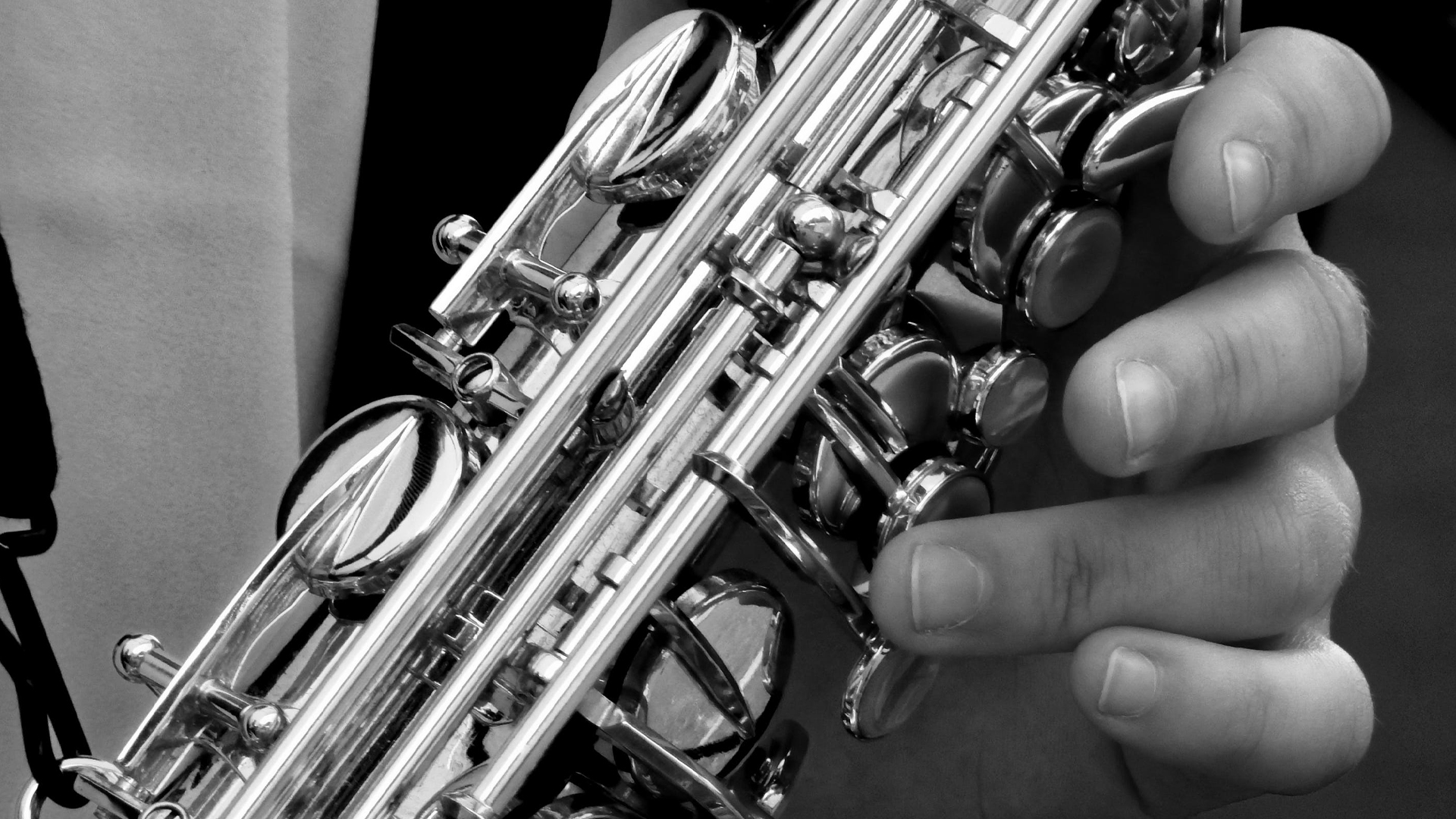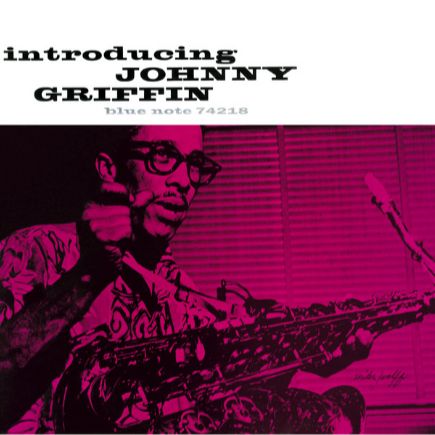Johnny Griffin: la fulgurance du Little Giant
Johnny Griffin incarne l’une des voix les plus puissantes et virtuoses du saxophone ténor dans le bop et le hard bop. Surnommé Little Giant , en raison de sa petite taille contrastant avec son jeu monumental, il naît à Chicago dans un environnement musical riche: sa mère est chanteuse, son père cornettiste, et la ville, foyer majeur du blues et du gospel, nourrit son oreille dès son plus jeune âge. Formé à la DuSable High School, il y étudie le hautbois, la clarinette et le saxophone, développant une solide base technique et une ouverture musicale qui marqueront son style.
À 17 ans, tout juste diplômé, Johnny Griffin rejoint l’orchestre de Lionel Hampton, où il impressionne par sa vélocité et son articulation limpide. De retour à Chicago en 1947, il codirige avec le trompettiste Joe Morris un sextet dont la section rythmique comprend Percy Heath et Philly Joe Jones, deux futurs piliers du jazz moderne. Cette période affine sa maturité musicale et son sens du collectif.
En 1956, Thelonious Monk le repère et le convie à jouer à ses côtés, saluant son énergie et son inventivité. Blue Note l’engage aussitôt et publie son premier album, Chicago Calling, considéré comme un manifeste du hard bop naissant. L’année suivante, Art Blakey l’intègre aux Jazz Messengers, où Griffin participe à plusieurs enregistrements majeurs, dont un avec Monk au piano. En 1958, il rejoint à nouveau Monk pour remplacer John Coltrane et enregistre Misterioso et Thelonious in Action, immortalisant ses performances au Five Spot.
En 1960, sa rencontre avec Eddie ‘Lockjaw’ Davis donne naissance à un quintette emblématique réunissant deux ténors d’exception, auteur de huit albums en deux ans. Peu après, Griffin s’installe en Europe, multipliant tournées et collaborations. Installé à Paris, il rejoint le big band de Kenny Clarke et Francy Boland (1962-1973), consolidant sa réputation internationale.
Virtuose du tempo rapide et maître du phrasé incisif, Johnny Griffin alliait intensité et lyrisme. Ses albums A Blowin’ Session (1957), aux côtés de John Coltrane et Hank Mobley, et The Congregation (1957) témoignent de sa capacité à conjuguer virtuosité technique, richesse mélodique et puissance expressive. Figure emblématique du hard bop, Johnny Griffin reste l’un des saxophonistes les plus respectés pour avoir porté le ténor à un sommet de vitesse, d’élégance et d’intensité émotionnelle.
Johnny Griffin: la fulgurancia del Little Giant
Johnny Griffin encarna una de las voces más poderosas y virtuosas del saxofón tenor en el bop y el hard bop. Apodado Little Giant por su baja estatura en contraste con la monumentalidad de su sonido, nació en Chicago en un entorno musical rico: su madre era cantante, su padre cornetista, y la ciudad, epicentro del blues y el góspel, alimentó su oído desde temprana edad. Formado en la DuSable High School, estudió oboe, clarinete y saxofón, construyendo una sólida base técnica y una apertura estilística que marcarían su lenguaje musical.
A los 17 años, recién graduado, se unió a la orquesta de Lionel Hampton, donde impresionó por su velocidad y su articulación precisa. En 1947 regresó a Chicago y codirigió con el trompetista Joe Morris un sexteto cuya sección rítmica incluía a Percy Heath y Philly Joe Jones, dos futuros referentes del jazz moderno. Este periodo refinó su madurez musical y su sentido del trabajo colectivo.
En 1956, Thelonious Monk lo invitó a tocar a su lado, elogiando su energía e inventiva. Blue Note lo contrató de inmediato y publicó su primer álbum, Chicago Calling, considerado un manifiesto del naciente hard bop. Al año siguiente, Art Blakey lo integró en los Jazz Messengers, con quienes participó en grabaciones clave, incluida una con Monk al piano. En 1958, sustituyó a John Coltrane en el cuarteto de Monk y grabó Misterioso y Thelonious in Action, que inmortalizaron sus actuaciones en el Five Spot.
En 1960, su encuentro con Eddie ‘Lockjaw’ Davis dio lugar a un quinteto histórico con dos tenores excepcionales, que grabó ocho álbumes en dos años. Poco después, Griffin se instaló en Europa, multiplicando giras y colaboraciones. Radicado en París, se unió al big band de Kenny Clarke y Francy Boland (1962-1973), consolidando su prestigio internacional.
Virtuoso del tempo rápido y maestro del fraseo incisivo, Johnny Griffin combinaba intensidad y lirismo. Discos como A Blowin’ Session (1957), junto a John Coltrane y Hank Mobley, y The Congregation (1957) reflejan su capacidad para unir virtuosismo técnico, riqueza melódica y expresividad. Figura central del hard bop, sigue siendo uno de los saxofonistas más respetados por haber llevado el tenor a un nivel supremo de velocidad, elegancia e intensidad emocional.
Johnny Griffin: la fulmineità del Little Giant
Johnny Griffin rappresenta una delle voci più potenti e virtuose del sassofono tenore nel bop e nell’hard bop. Soprannominato Little Giant per la sua bassa statura in contrasto con la monumentalità del suo suono, nacque a Chicago in un ambiente musicale fertile: madre cantante, padre cornettista, e una città che, centro nevralgico di blues e gospel, nutrì il suo orecchio fin da giovane. Alla DuSable High School studiò oboe, clarinetto e sassofono, costruendo una solida base tecnica e un’apertura musicale che avrebbero segnato il suo stile.
A 17 anni, appena diplomato, entrò nell’orchestra di Lionel Hampton, dove colpì per velocità e articolazione limpida. Tornato a Chicago nel 1947, codiresse con il trombettista Joe Morris un sestetto con Percy Heath e Philly Joe Jones nella sezione ritmica, due futuri giganti del jazz moderno. Questo periodo affinò la sua maturità musicale e il suo senso collettivo.
Nel 1956 Thelonious Monk lo invitò a suonare al suo fianco, lodandone energia e inventiva. Blue Note lo scritturò e pubblicò subito il suo primo album, Chicago Calling, considerato un manifesto dell’hard bop nascente. L’anno seguente Art Blakey lo incluse nei Jazz Messengers, con cui registrò lavori fondamentali, tra cui uno con Monk al piano. Nel 1958 sostituì John Coltrane nel quartetto di Monk, incidendo Misterioso e Thelonious in Action, che immortalarono le sue performance al Five Spot.
Nel 1960, l’incontro con Eddie “Lockjaw” Davis diede vita a un quintetto storico con due tenori eccezionali, autore di otto album in due anni. Poco dopo, Griffin si trasferì in Europa e, stabilitosi a Parigi, si unì al big band di Kenny Clarke e Francy Boland (1962-1973), consolidando la sua fama internazionale.
Virtuoso del tempo veloce e maestro del fraseggio incisivo, Johnny Griffin sapeva unire intensità e lirismo. Album come A Blowin’ Session (1957) con John Coltrane e Hank Mobley, e The Congregation (1957) testimoniano la sua capacità di fondere tecnica, melodia e potenza espressiva. Figura iconica dell’hard bop, rimane tra i sassofonisti più rispettati per aver portato il tenore a vette di velocità, eleganza e profondità emotiva.
Johnny Griffin: the brilliance of the Little Giant
Johnny Griffin stands as one of the most powerful and virtuosic tenor saxophone voices in bop and hard bop. Nicknamed Little Giant for his small stature contrasted with his monumental sound, he was born in Chicago into a rich musical environment: his mother was a singer, his father a cornetist, and the city—an epicenter of blues and gospel—shaped his musical ear from an early age. At DuSable High School, he studied oboe, clarinet, and saxophone, building a solid technical foundation and stylistic openness that would define his playing.
At 17, fresh out of school, Griffin joined Lionel Hampton’s orchestra, impressing with his speed and crisp articulation. In 1947, he returned to Chicago and co-led a sextet with trumpeter Joe Morris, featuring Percy Heath and Philly Joe Jones in the rhythm section, both future pillars of modern jazz. This period sharpened his musical maturity and ensemble sensibility.
In 1956, Thelonious Monk invited him to perform, praising his energy and inventiveness. Soon after, Blue Note signed him and released his debut album, Chicago Calling, a landmark of emerging hard bop. The following year, Art Blakey brought him into the Jazz Messengers, where he contributed to major recordings, including one with Monk on piano. In 1958, he replaced John Coltrane in Monk’s quartet, recording Misterioso and Thelonious in Action, which captured their famed Five Spot performances.
In 1960, his encounter with Eddie ‘Lockjaw’ Davis led to the creation of a landmark quintet that brought together two exceptional tenor saxophonists, recording eight albums in just two years. Shortly thereafter, Griffin moved to Europe, embarking on extensive tours and numerous collaborations. Settling in Paris, he joined the Kenny Clarke–Francy Boland Big Band (1962–1973), further cementing his international reputation.
A virtuoso of fast tempos and a master of incisive phrasing, Johnny Griffin combined intensity with lyricism. His albums A Blowin’ Session (1957), alongside John Coltrane and Hank Mobley, and The Congregation (1957) showcase his ability to merge technical brilliance, melodic richness, and expressive power. An emblematic figure of hard bop, Johnny Griffin remains one of the most respected saxophonists for elevating the tenor to unparalleled heights of speed, elegance, and emotional depth.

Autres articles – Otros artículos – Altri articoli
Art BLAKEY (11.10.1919–16.10.1990)
Francy BOLAND (06.11.1929–12.08.2005)
Kenny CLARKE (09.01.1914–26.01.1985)
John COLTRANE (23.09.1926–17.07.1967)
Eddie « Lockjaw » DAVIS (02.03.1922–03.11.1986)
Lionel HAMPTON (20.04.1913–31.08.1978)
Percy HEATH (30.04.1923–28.04.2005)
Philly Joe JONES (15.07.1923–30.08.1985)
Hank MOBLEY (07.07.1930–30.05.1986)

